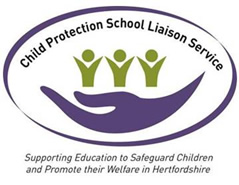Sex and relationships
DfE – Keeping children safe in education
Keeping Children Safe in Education contains a section titled: Child-on-child sexual violence and sexual harassment which covers:
- what sexual violence and sexual harassment is
- what schools’ and colleges’ legal responsibilities are
- creating a whole school or college approach to safeguarding and child protection; and
- how to respond to reports of sexual violence and sexual harassment
Sexual behaviour
NSPCC course to help primary schools respond to harmful sexual behaviour
The NSPCC have an online training course to help teachers and school staff identify and respond appropriately to instances of sexualised behaviour. It includes practical information and advice on how to recognise, respond to and report cases of unhealthy sexualised behaviour so schools can play their part in preventing children from coming to harm.
NSPCC: Training for schools on sexual behaviour
For all any queries or further information, please contact: safeguardingboardteam@nspcc.org.uk
Harmful sexual behaviour among children and young people NICE guideline - September 2016
This guideline covers children and young people who display harmful sexual behaviour, including those on remand or serving community or custodial sentences. It aims to ensure these problems don't escalate and possibly lead to them being charged with a sexual offence. It also aims to ensure no-one is unnecessarily referred to specialist services.
NICE: Guidance on sexual behaviour
Inform young people service - Lucy Faithfull Foundation
The Lucy Faithfull Foundation works with children , young people (and their families) who have displayed problematic sexual behaviour on the internet or in the ‘real world’, to prevent an escalation or reoccurrence of the behaviour. They can offer one to five free sessions of work with the young person (aged 12+) and their family, tailored to their needs. Each session will be delivered by an experienced practitioner either by telephone (through our Helpline) or face-to-face.
It is for young people who could benefit from a short piece of work, where there are lower level concerns about sexualised behaviour in the ‘real world’ or online (e.g. amber on the Brook Advisory Traffic Light Tool) .The young person does not need to be open to a safeguarding or specialist team to access this service.
Schools can contact the Lucy Faithfull Foundation for further information or to discuss a referral on 01372 847160.
Assessing sexual behaviour
The most commonly used tools for risk assessing sexualised behaviours are Brook’s Traffic Light Tool and Hackett’s sexualised behaviour continuum.
Brook’s Traffic Light Tool is now a licensed package which Hertfordshire education settings can access for free from Hertfordshire Safeguarding Children’s Partnership. Hackett’s sexualised behaviour continuum is freely available with guides on how to use provide from institutions such as the NSPCC.
By identifying a level of risk for sexual behaviours, professionals across different agencies can work to the same criteria when making decisions and protect children and young people with a unified approach.
These resources are designed to help professionals think through their decisions and does not replace organisational procedures or assessment frameworks.
Sharing nudes and semi-nudes (formerly referred to as sexting)
What do we mean by sharing nudes and semi-nudes?
In the latest advice for schools and colleges (UKCIS, 2020), this is defined as the sending or posting of nude or semi-nude images, videos or live streams online by young people under the age of 18. This could be via social media, gaming platforms, chat apps or forums. It could also involve sharing between devices via services like Apple’s AirDrop which works offline. Alternative terms used by children and young people may include ‘dick pics’ or ‘pics’.
The motivations for taking and sharing nude and semi-nude images, videos and live streams are not always sexually or criminally motivated.
This advice does not apply to adults sharing nudes or semi-nudes of under 18-year olds. This is a form of child sexual abuse and must be referred to the police as a matter of urgency.
Teaching resources
Speak out stay safe service
This service is provided free of charge by the NSPCC.
The Speak out Stay safe assembly helps children understand about different types of abuse so that they can get help if or when they need it. This includes talking about neglect, physical abuse, sexual abuse, emotional abuse and bullying.
The assembly helps children to identify a trusted adult they can speak to if they are worried about themselves or a friend. They also learn about Childline, and how the service can support them.
CEOP - Play like share resource for eight-to-ten year olds
This three-episode animated series and accompanying resource pack aims to help eight-to-ten year olds learn how to stay safe from sexual abuse, exploitation and other risks they might encounter online such as sharing content.
Play Like Share helps children to identify the signs of pressurising and threatening behaviour in an age appropriate way. This is explored through highly relatable characters and non-frightening peer-on-peer scenarios, where children recognise tactics such as flattery or bribery or that feeling you might get when something’s not right. The resources aims to develop children’s confidence and skills to respond to these situations and get help when they need it.
CEOP: Play Like Share films and resource pack
